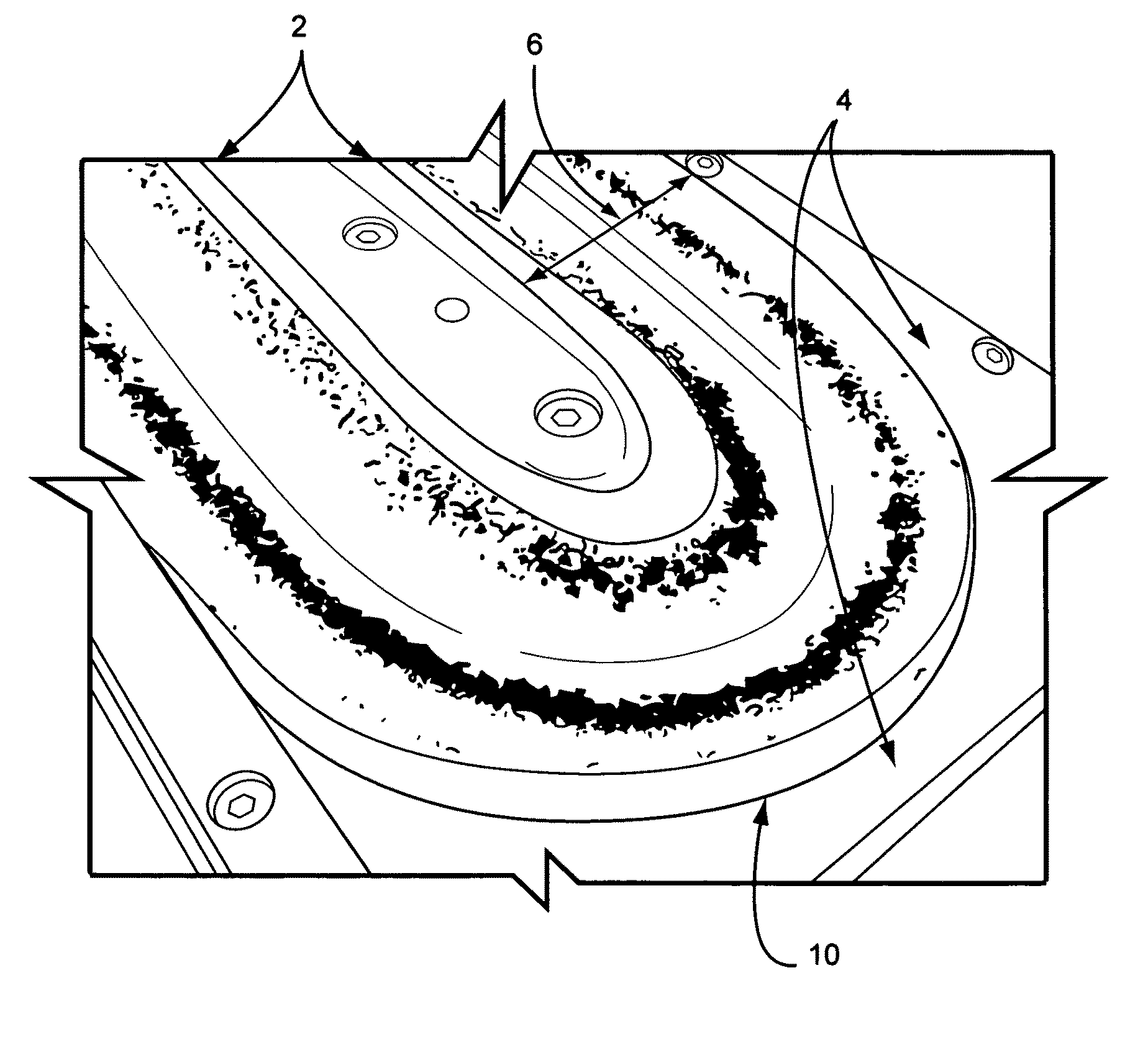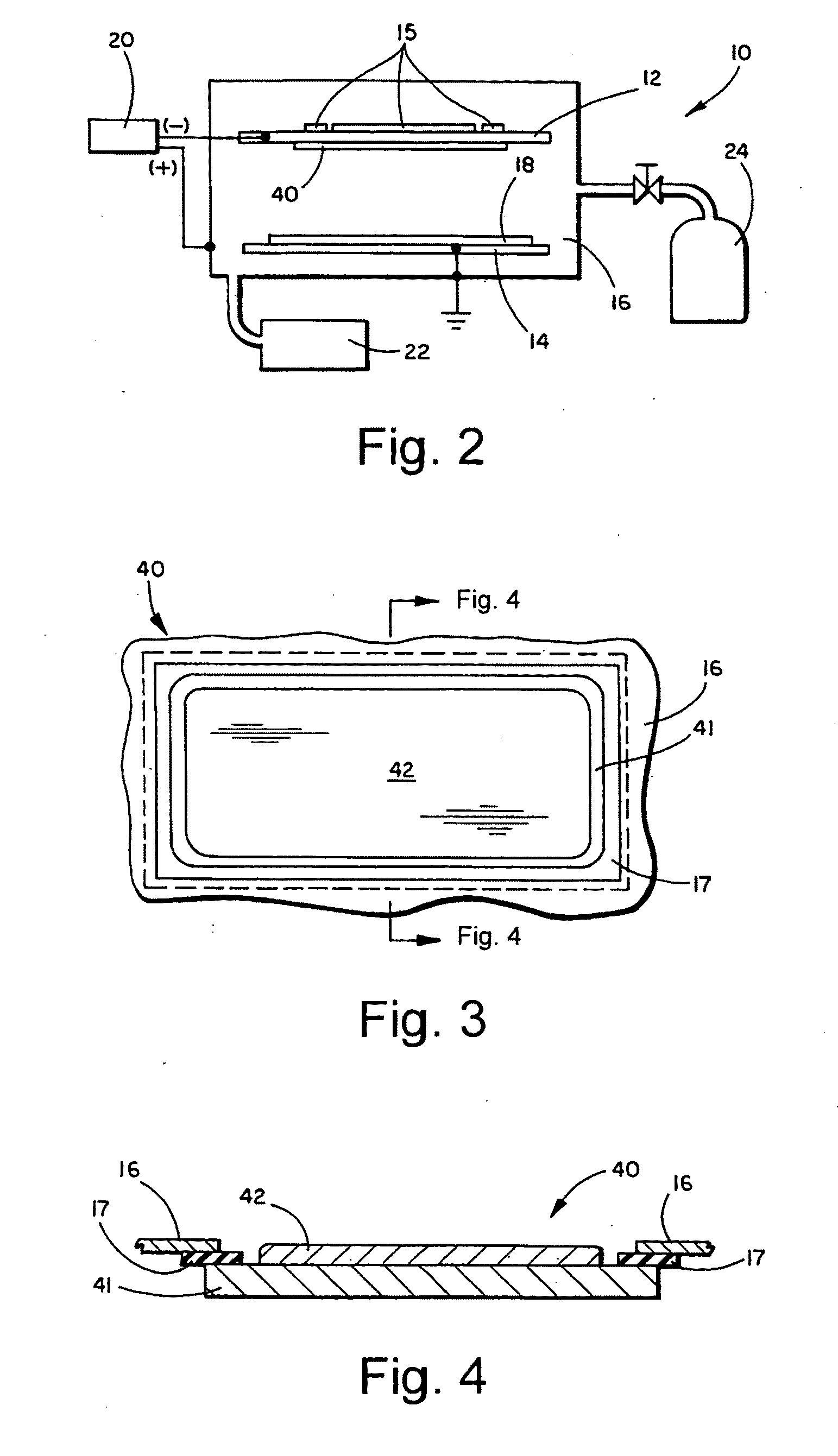Apparatus and method for sputtering target debris reduction
a technology of apparatus and debris, applied in the field of sputtering targets, can solve the problems of nicrox debris that eventually flakes off the surface, the creation of sputtered regions and non-sputtered regions on sputtering targets, etc., to achieve the effect of reducing an amount of debris and facilitating the sputtering coating of the articl
- Summary
- Abstract
- Description
- Claims
- Application Information
AI Technical Summary
Benefits of technology
Problems solved by technology
Method used
Image
Examples
example
[0036]To test the feasibility of an oxidation barrier based on a sol-gel coating in connection with a nichrome target, the following test was devised. Three sample specimens were prepared. First, a silicon oxide inclusive sol-gel was applied in liquid form to a U.S. Mint quarter via a spray bottle. The sprayed quarter was allowed to dry, and it was green cured in a box furnace for approximately 10 minutes at about 200 degrees C. Second, a silicon oxide inclusive sol-gel was applied in liquid form to a U.S. Mint quarter via a spray bottle. This second sprayed quarter was allowed to dry, but it was not cured. Third, a U.S. Mint quarter was not treated with a sol-gel solution. As is known, U.S. Mint quarters currently have an outer cladding comprising about 25% nickel and 75% copper. An air atmosphere belt furnace was set to bake for about 30 minutes at about 625 degrees C. to simulate the harsh oxidizing environment of a sputtering apparatus.
[0037]The test results for the three sample...
PUM
| Property | Measurement | Unit |
|---|---|---|
| Fraction | aaaaa | aaaaa |
| Temperature | aaaaa | aaaaa |
| Shape | aaaaa | aaaaa |
Abstract
Description
Claims
Application Information
 Login to View More
Login to View More - R&D
- Intellectual Property
- Life Sciences
- Materials
- Tech Scout
- Unparalleled Data Quality
- Higher Quality Content
- 60% Fewer Hallucinations
Browse by: Latest US Patents, China's latest patents, Technical Efficacy Thesaurus, Application Domain, Technology Topic, Popular Technical Reports.
© 2025 PatSnap. All rights reserved.Legal|Privacy policy|Modern Slavery Act Transparency Statement|Sitemap|About US| Contact US: help@patsnap.com



